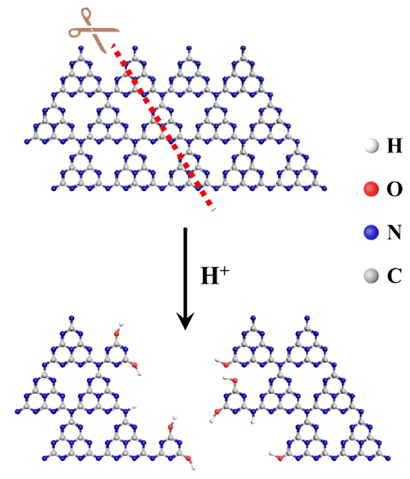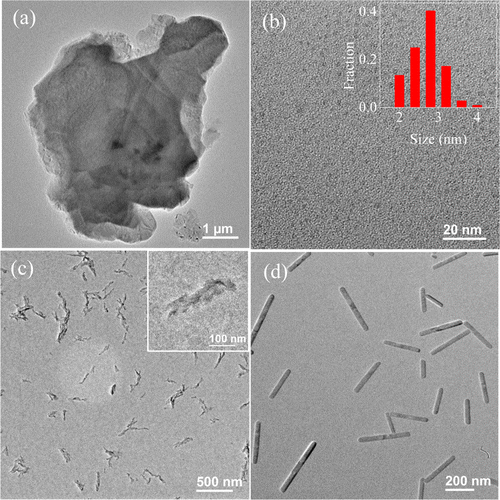
Recently, Professor Zhang Yuanjian from School of Chemistry and Chemical Engineering and his team published their latest research results about Chemical Cleavage of Layered Carbon Nitride with Enhanced Photoluminescent Performances and Photoconduction in ACS Nano.
Graphene quantum dots (GQDs) and carbon dots (C-dots) have various alluring properties and potential applications, but they are often imited by unsatisfied optical performance such as low quantum yield, ambiguous fluorescence emission mechanism, and narrow emission wavelength. Herein, Zhang's team report that bulk polymeric carbon nitride could be utilized as a layered pecursor to prepare carbon nitride nanostructures such as nanorods, nanoleaves and quantum dots by chemical tailoring. As doped carbon materials, these carbon nitride nanostructures not only intrinsically emitted UV lights but also well inherited the explicit photoluminescence mechanism of the bulk pristine precursor, both of which were rarely reported for GQDs and C-dots. Especially, carbon nitride quantum dots (CNQDs) had a photoluminescence quantum yield (QY) up to 46%, among the highest QY for metal-free quantum dots so far. As examples, the CNQDs were utilized as a photoluminescence probe for rapid detection of Fe3+ with a detection limit of 1 μM in 2 min and a photoconductor in an all-solid-state device. This work would open up an avenue for doped nanocarbon in developing photoelectrical devices and sensors.

VIEW FULL TEXT:http://pubs.acs.org/doi/10.1021/acsnano.5b05924




